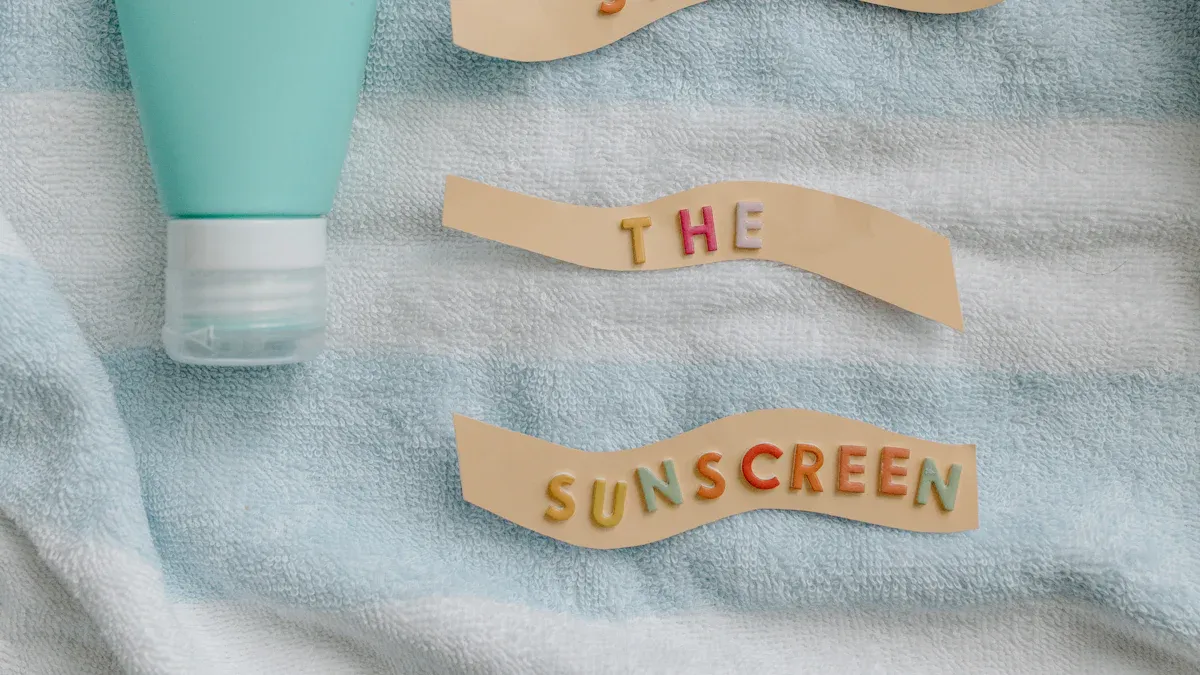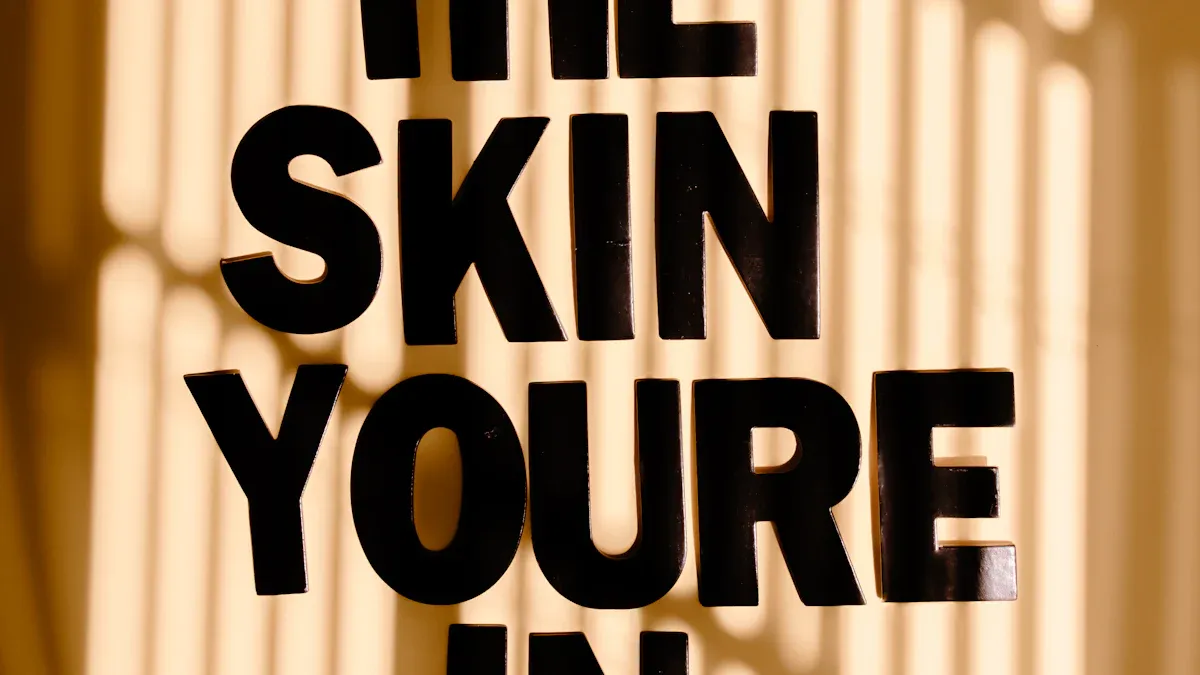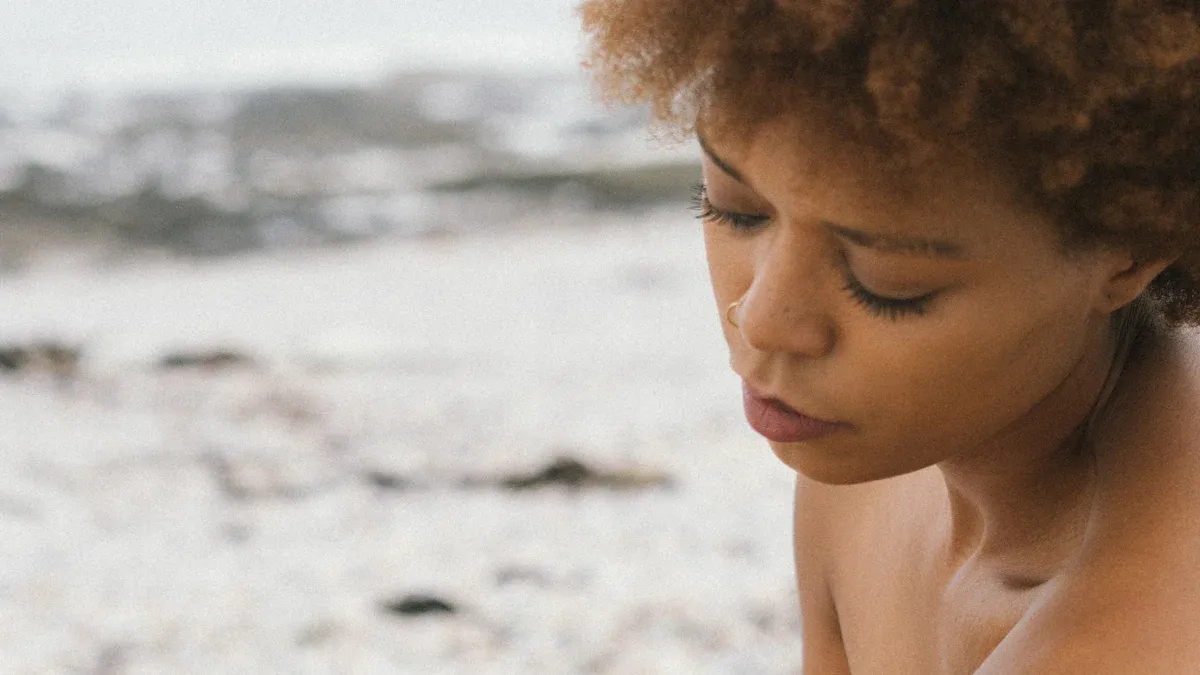How Sun Safety Can Help Prevent Skin Cancer

Skin cancer is one of the most common cancers, and ultraviolet (UV) radiation plays a major role in its development. You may not realize it, but UV rays are a proven human carcinogen. Indoor tanning devices, for example, can emit UV radiation up to 15 times stronger than the sun at its peak. This exposure contributes to over 419,000 skin cancer cases in the U.S. every year. Women in their 20s who have tanned indoors are six times more likely to develop melanoma. By understanding the role of sun safety in skin cancer prevention, you can take steps to protect your skin and reduce your risk.
Key Takeaways
Learn how UV rays can cause skin cancer. Keep your skin safe from UVA and UVB rays all year.
Use sunscreen with SPF 30 or higher. Put on a lot and reapply every two hours to stay protected.
Stay in the shade when the sun is strongest, between 10 a.m. and 4 p.m. This easy step helps prevent sunburn.
Don’t use tanning beds. They give off UV rays that raise your chance of skin cancer.
Check your skin often for changes. Finding problems early makes treatment easier and more successful.
The Role of Sun Safety in Skin Cancer Prevention

Understanding UV Radiation and Its Risks
UV radiation from the sun is a major factor in skin cancer development. It damages skin cells and increases the risk of mutations. There are two main types of UV rays: UVA and UVB. UVA rays penetrate deeply, contributing to premature aging and skin cancer. UVB rays cause sunburn and play a direct role in DNA damage. Both types harm your skin year-round, even on cloudy days.
The UV Index helps you understand the intensity of UV radiation in your area. A higher index means a greater risk of skin damage. Protecting your skin daily, regardless of the season, reduces your exposure to harmful rays.
Evidence | Description |
|---|---|
Most skin cancers are caused by excessive exposure to UV light, which can damage skin cells. | |
Year-round Protection | Protection from UV rays is crucial throughout the year, not just in summer. |
UV Index | The UV Index forecasts the strength of UV rays, indicating when to protect your skin. |
Protective Measures | Staying in the shade, using sunscreen, and wearing protective clothing can significantly reduce skin cancer risk. |
How Sun Exposure Leads to Skin Cancer
Sun exposure causes both immediate and long-term damage to your skin. Acute effects include sunburn, which occurs when UV rays damage the DNA in your skin cells. Chronic exposure leads to cumulative damage, increasing the risk of skin cancer over time.
UV radiation can alter tumor-suppressing genes in your skin, making it harder for your body to repair damaged cells. This increases the likelihood of mutations and tumor formation. Experiencing five or more blistering sunburns between ages 15 and 20 raises your melanoma risk by 80%. Nonmelanoma skin cancer risk increases by 68%.
Acute effects of UV radiation include DNA damage and sunburn.
Chronic effects include melanoma, squamous cell carcinoma, and basal cell carcinoma.
Why Everyone Needs Sun Protection, Regardless of Skin Tone
Skin cancer affects people of all skin tones. While darker skin has more melanin, which offers some protection, it does not make you immune. Late-stage melanoma diagnoses are more common among individuals with darker skin tones. For example:
The five-year survival rate for Black patients is 70%, compared to 94% for white patients.
52% of non-Hispanic Black patients receive melanoma diagnoses at an advanced stage, compared to 16% of non-Hispanic white patients.
Protecting your skin is essential, no matter your complexion. Use sunscreen, wear protective clothing, and avoid excessive sun exposure to reduce your risk.
Practical Sun Safety Tips for Everyday Life

Seek Shade During Peak UV Hours
UV rays are strongest between 10 a.m. and 4 p.m., making this the most critical time to protect your skin. You can reduce UV exposure by staying in the shade whenever possible. Seek shelter under trees, umbrellas, or other structures. This simple habit minimizes your risk of sunburn and long-term skin damage. However, remember that UV rays can reflect off surfaces like water, sand, and snow. Take extra precautions in these environments to avoid overexposure.
Tip: Use the UV Index to plan your outdoor activities. A higher index means stronger UV rays, so prioritize shade during these times.
Wear Protective Clothing and Accessories
Benefits of Hats and Sunglasses
Protective accessories like hats and sunglasses are essential for sun safety. A wide-brimmed hat shields your face, neck, and ears from harmful rays. For optimal protection, choose hats with a brim of at least three inches. Sunglasses with UV-blocking lenses protect your eyes and the delicate skin around them. Wrap-around styles or those with sidepieces offer the best coverage.
Choosing UV-blocking Fabrics
Clothing can act as a barrier against UV radiation. Long-sleeved shirts and pants made from tightly woven fabrics provide excellent protection. Look for garments labeled with a UPF (Ultraviolet Protection Factor) rating. UPF 50 fabrics, for example, block up to 98% of UV rays. Lightweight and breathable options are available, making it easier to stay comfortable while staying safe.
Note: Darker colors and denser fabrics offer better UV protection than lighter, thinner materials.
Use Sunscreen Effectively
Selecting the Right SPF
Sunscreen is a vital tool in preventing skin cancer. Choose a broad-spectrum sunscreen with an SPF of at least 15, though SPF 30 or higher is recommended for extended outdoor activities. Broad-spectrum formulas protect against both UVA and UVB rays, reducing your risk of sunburn and long-term skin damage.
Proper Application and Reapplication
Apply sunscreen generously to all exposed skin, including often-missed areas like the ears, neck, and tops of your feet. Use about one ounce (a shot glass full) for full-body coverage. Reapply every two hours, or more frequently if you’re swimming or sweating. Regular sunscreen use can lower your risk of squamous cell carcinoma by 40% and melanoma by 50%.
Reminder: Sunscreen is not just for sunny days. Apply it even when it’s cloudy, as UV rays can penetrate through clouds.
Avoid Tanning Beds and Artificial UV Sources
Tanning beds and artificial UV sources pose significant risks to your skin. Many people mistakenly believe indoor tanning is safer than sun exposure, but this is far from the truth. These devices emit UV radiation levels that can be 10 to 15 times stronger than the sun at its peak. This intense exposure dramatically increases your risk of developing skin cancer.
UV radiation is a proven human carcinogen.
Indoor tanning raises the risk of squamous cell carcinoma by 83% and basal cell carcinoma by 29%.
Women in their 20s who tan indoors are six times more likely to develop melanoma.
Using tanning beds before age 35 increases melanoma risk by 75%.
Fact: Over 419,000 skin cancer cases in the U.S. each year are linked to indoor tanning.
The damage caused by tanning beds goes beyond cancer. UV radiation accelerates skin aging, leading to wrinkles, dark spots, and a leathery texture. These effects may not appear immediately, but they accumulate over time, leaving lasting harm.
You can protect your skin by avoiding tanning beds altogether. If you want a sun-kissed glow, consider safer alternatives like self-tanning lotions or sprays. These products provide a bronzed look without exposing your skin to harmful UV rays.
Remember, there is no such thing as a "safe tan" from UV radiation. Every session in a tanning bed increases your risk of skin damage and cancer. Prioritize your health by embracing your natural skin tone or opting for UV-free tanning solutions. Your skin will thank you for it.
Debunking Myths About Sun Safety
"A Tan Is Healthy" and Other Misconceptions
Many people believe that a tan is a sign of health, but this is a dangerous misconception. A tan actually indicates skin damage. When your skin darkens, it is responding to DNA injury caused by ultraviolet (UV) radiation. This damage increases your risk of developing skin cancer, including melanoma, basal cell carcinoma, and squamous cell carcinoma.
Evidence | Description |
|---|---|
Tanning as Skin Damage | Tanning is a sign of skin damage, indicating DNA injury to the skin. |
Increased Cancer Risk | Tanning increases the risk of basal cell carcinoma, squamous cell carcinoma, and melanoma. |
No Safe Tan | There is no such thing as a safe or healthy tan; the best defense is to avoid tanning altogether. |
Tanning beds are even more harmful than natural sunlight. They emit UVA radiation at levels four times higher than the noontime sun and nearly double the UVB radiation.
Type of Radiation | Tanning Beds | Noontime Sun |
|---|---|---|
UVA Radiation | Standard level | |
UVB Radiation | Nearly twice as high | Standard level |
Some tanning salons claim that controlled tanning protects against burns, but this is false. Any tan, whether from the sun or a tanning bed, signifies skin damage. Protect your skin by avoiding tanning altogether.
Sunscreen on Cloudy Days: Is It Necessary?
You might think sunscreen is unnecessary on cloudy days, but this is a myth. Up to 80% of UV rays penetrate through clouds, meaning your skin remains vulnerable. Sunscreen should be part of your daily routine whenever you are outdoors, regardless of the weather.
Tip: Apply sunscreen with a broad-spectrum SPF of at least 30 every day, even when it’s overcast. This habit protects your skin from harmful UV rays year-round.
The Truth About Dark Skin and UV Protection
Darker skin tones contain more melanin, which provides some natural protection against UV rays. However, this does not make you immune to skin damage or cancer. Melanin reduces, but does not eliminate, the risk of DNA damage caused by UV radiation.
Late-stage melanoma diagnoses are more common among individuals with darker skin tones. This happens because many people with dark skin believe they do not need sun protection. Protect your skin by using sunscreen, wearing protective clothing, and seeking shade. Everyone, regardless of skin tone, benefits from practicing sun safety.
Reminder: Skin cancer can affect anyone. Early detection and prevention are key to reducing your risk.
The Importance of Skin Checks and Early Detection
How to Perform a Self-Examination
Regular self-examinations can help you detect skin cancer early, when it is most treatable. You should check your skin monthly, looking for any new or unusual spots, moles, or changes in existing ones. Follow these steps for a thorough self-exam:
Examine your face, paying close attention to your nose, lips, mouth, and ears.
Use a blow-dryer and mirror to inspect your scalp.
Check your hands, including your palms, the backs of your hands, and under your fingernails.
Look at your arms, starting from your elbows and including your underarms.
Inspect your torso, focusing on your neck, chest, and the undersides of your breasts.
Use two mirrors to scan your upper back.
Examine your lower back, buttocks, and the backs of your legs.
Inspect your legs, including your genitals, ankles, and feet.
Tip: Keep a record of your findings. This helps you track changes over time and share accurate information with your doctor.
When to Consult a Dermatologist
You should consult a dermatologist if you notice any suspicious changes during your self-exam. Clinical guidelines recommend seeking professional advice for unusual growths, sores that do not heal, or moles that change in size, shape, or color. Dermatologists use advanced diagnostic tools and biopsies to confirm or rule out skin cancer. For basal cell carcinoma (BCC) and squamous cell carcinoma (SCC), early consultation ensures timely treatment and follow-up care. If melanoma is suspected, dermatologists may recommend surgical intervention or other specialized treatments based on the stage of the disease.
Reminder: Early consultation with a dermatologist can make a significant difference in treatment outcomes.
The Life-Saving Benefits of Early Detection
Detecting skin cancer early dramatically improves your chances of successful treatment. When melanoma is caught early, the five-year survival rate is 99 percent. Studies show that screening programs lead to higher diagnosis rates of early-stage melanomas. For example:
Individuals in screening programs are 160% more likely to be diagnosed with in situ melanoma.
They are 80% more likely to detect stage 1 melanoma compared to later stages.
Note: Dr. Seitz highlights that early detection remains the best path to curative treatment for all types of skin cancer. Enhanced treatment options further improve outcomes, even for advanced cases.
By performing regular self-exams and consulting a dermatologist when needed, you can take control of your skin health. Early detection saves lives—make it a priority.
Sun safety offers a simple yet effective way to reduce your risk of skin cancer. Protecting your skin from UV rays and avoiding tanning can make a significant difference. Schools and workplaces now promote sun safety through educational programs and protective measures. You can follow their lead by using sunscreen, wearing protective clothing, and seeking shade. These habits not only safeguard your health but also help reduce the economic burden of skin cancer, which costs Americans over $100 million annually in lost productivity. Start prioritizing sun safety today and inspire others to do the same. 🌞
FAQ
What is the best way to protect your skin from UV rays?
The best way to protect your skin is by combining multiple strategies. Use sunscreen with SPF 30 or higher, wear protective clothing, and seek shade during peak UV hours. Avoid tanning beds and reapply sunscreen every two hours when outdoors.
Tip: Don’t forget to protect your lips with SPF lip balm!
Can you get sunburned on cloudy days?
Yes, up to 80% of UV rays can pass through clouds. Your skin remains vulnerable even when the sun isn’t visible. Apply sunscreen daily, regardless of the weather, to protect yourself from harmful UV radiation.
Reminder: Make sunscreen a part of your daily routine, rain or shine.
How often should you reapply sunscreen?
Reapply sunscreen every two hours, especially if you’re swimming or sweating. Use about one ounce (a shot glass full) for full-body coverage. Regular reapplication ensures continuous protection from harmful UV rays.
Note: Water-resistant sunscreen still needs reapplication after swimming or heavy sweating.
Is sunscreen necessary if you have dark skin?
Yes, everyone needs sunscreen, regardless of skin tone. Darker skin has more melanin, which offers some protection, but it doesn’t prevent all UV damage. Skin cancer can affect anyone, so use sunscreen and practice sun safety daily.
Fact: Late-stage melanoma diagnoses are more common in individuals with darker skin tones.
Are self-tanning products safe?
Yes, self-tanning products like lotions and sprays are safe alternatives to tanning beds or sunbathing. They provide a sun-kissed look without exposing your skin to harmful UV rays. Always follow the product instructions for the best results.
Reminder: Self-tanners don’t protect against UV rays. Use sunscreen when outdoors.
See Also
An In-Depth Overview of Various Cancer Types
Recognizing Symptoms and Treatments for Conjunctival Melanoma
Exploring Cancer Types Associated with AIDS Infection
